#CavsRank Number 1: Mark Price
2014-03-31“But we’d play catch. I’d pretend I was Bob Feller. He was my father’s favorite pitcher. I wanted to please him. I loved the moments when we were done, when he’d put his arm around me as we walked into the house. He seldom said a word. But I can still see the genuine smile on his face.” – Terry Pluto, Our Tribe
There are few bonds in this world stronger than the love expressed when a father teaches his son the game that he loves, and the son, unknowingly, teaches the father what really matters in this world. Growing up, I recall the players my father loved: Rocky Colavito, Lenny Barker, Joe Carter, Sandy Alomar Jr., and Mark Price. Growing up, I idolized Mark Price, and my dad fostered the starry-eyed relationship between child and pro-athlete. To my dad, Mark Price embodied character worthy of my aspirations, on and off the court. “Practice your free throws; the games are won and lost at the free throw line,” he’d say. And I did.
William “Mark” Price was born in Bartlesville, Oklahoma, on February 15, 1964, the son of Oklahoma basketball legend William “Denny” Price. Denny led Norman High School to their first ever state championship and set the Oklahoma tournament record for points in a game. Denny went on to play college basketball for Oklahoma, and embarked on an illustrious coaching career, rising all the way to assistant coach of the Phoenix Suns. Mark, certainly, embraced his father’s love of God, family, and hoops.
Mark attended Enid High school and was named Oklahoma high school player of the year by the Daily Oklahoman (Oklahoma’s largest newspaper). He led his state class in scoring his junior and senior seasons. In the first round of the state tournament, Mark tied his father’s record-setting scoring mark of 42 points. Like father like son. Sons, actually – Denny had two more boys, Matt and Brent, who inherited the same tutelage. Both played college ball and Brent played in the NBA.
Price exploded out of the gate at Georgia Tech, leading the illustrious ACC in scoring his freshman year and completely turning around the GT program under coach Bobby Cremins. Before Price, the Yellow Jackets were 14-40 in the previous two seasons. That changed dramatically, and they would post a record of 85-41 during his four years. In ’83, he was ACC Rookie of the year. In ’84, he led the Yellow Jackets into the NIT tournament. In ‘85, he helped them win their first ever ACC championship and was named MVP of the tournament. That season and the following (’86), Georgia Tech made it to the big dance. In all four years, Price was awarded either 1st or 2nd team all-ACC honors, an extremely rare feat shared by just three others: Tyler Hansbrough, Jeff Lamp, and Johnny Dawkins.
I’m trying to imagine how Chad Ford and Jonathan Givony would have approached the subject of Mark Price’s draft stock. They probably wouldn’t have found it repulsive that he played 4 years in college, as that was the trend in those simpler times, but I’m sure they’d have had huge reservations about a 6-foot nothing, skinny, choir boy making the leap to the Pros. Price, obviously, dealt with such commentary at the time, and clearly used it as motivation to improve.
From what I can gather, he had three traits going for him, none of which was explosiveness, tremendous upside potential, or length. He was a student of the game, mastering its fundamentals and capturing its rhythm. He was a fierce competitor who was humble enough to be scrappy and disciplined, never approaching the game as though his elite skills entitled him to greatness. Most importantly, he was one of the greatest shooters in the history of planet Earth. The first two traits are valued but insufficient for scouts, as it’s an athlete’s league, and I’m sure there were questions about how Price would create space to shoot at the next level. As such, he wasn’t drafted until the second round, making him one of the greatest players ever drafted in the second round.
He was a draft day trade to the Cleveland Cavaliers in what would become a major overhaul of the team and one of the greatest single drafts any team has ever had. The Cavs added Brad Daugherty, Ron Harper, and Price through that draft, and were finally eligible to play Hot Rod Williams even though technically he had been drafted the prior season.
Looking back, Price struggled his rookie season, setting career lows in all shooting categories, prompting the Cavs to look for a starting-caliber point guard in the 1987 draft. Little did they know, Price simply needed a little Darwinian motivation, or maybe just a year of experience under his belt. It’s stunning to realize the Cavs drafted Kevin Johnson with the 7th pick in the 1987, he played well enough for a rookie, and they dealt him midway through the season. That’s how confident they were that Price was the future PG of the team. That trade brought Larry Nance to Cleveland and solidified the Cavs as a powerhouse for the next half-decade.
Price, a devastating scorer, put up some insane shooting numbers his sophomore season. He shot 50% from the field, 49% from beyond the arc, (2nd best in the NBA that season) and 88% from the line. His finest game of the season came against Michael Jordan’s Bulls in the 1st round of the 1988 playoffs. In Game 3, with the Cavs down 2-0 against the Bulls, Price scored 31 points on 11 of 14 shooting (no 3s!) with six rebounds, six assists, and zero turnovers. He went toe to toe with the GOAT (38 points, nine dimes) and the Cavs prevailed in that game and Game 4 before falling at Chicago in Game 5. To get a sense of how different the modern NBA is, Price, one of the greatest 3-point shooters of all time, attempted only two 3s the entire game. Both teams combined attempted just six 3s.
I’d like to think this game inspired Daryl Morey to value the 3-point shot, as he watched Price do battle with Jordan’s Bulls during his formidable years.
Price continued his ascent to the highest ranks of the NBA during one of its most talent-laden eras. In his third season, he joined a very exclusive club, doubling its membership. He became the second member of Larry Bird’s club, the 50-40-90 club, named for those select few sharpshooters that shot at least 50% from the field, 40% from the 3-point line, and 90% from the free throw line. The 50-40-90 club is unique in that its ranks are held not by shooting specialists, but by All-Star and Hall of Fame worthy players that had the skills to create easy baskets for themselves to get over the 50% FG% hump, and also possessed the purest of strokes worthy of the game’s most celebrated specialists like Craig Hodges or Kyle Korver.
It was that season that the Cavs had officially arrived. They plowed through the regular season, winning 57 games, and posted the league’s highest SRS that season (in essence, they were the best regular season team). Price made his first All-Star team, joining Nance and Daugherty. The Richfield Coliseum was rocking, with the Cleveland and Akron faithful meeting in the middle to witness the accelerating Cavaliers do battle against the aging dynasties of the 80s and the emerging rivals of a stacked Central Division which included the Pistons, Cavs, Hawks, Bucks, and Bulls, or the No. 1, No. 4, No. 5, No. 6 and No. 10 teams in the 25-team NBA. Despite losing to the Bulls the previous season, the real threat to their ascendancy was the Detroit Pistons, who had won the division the previous season, and had completely owned the Cavs in the regular season (5-1 record). Those Pistons lost an epic 7-game NBA Finals series to the Lakers and came back ready to avenge their defeat. The Cavs were looking up at the Pistons and Mark Price was personally battling Isiah Thomas that season.
It must have been a rude awakening for the Bad Boys when, on December 15, four Cavs starters scored 20 points en route to a 21 point domination of the 16-5, Division-leading Pistons. Or maybe they thought it was a fluke, until the Cavs went into the Palace and defeated the Pistons yet again in late January. I imagine they had no recourse but to tap into their thuggish instincts when they met the Cavs again in February. That is the game where I learned that my father’s most hated player was Rick Mahorn. “I thought Rick Mahorn KILLED Mark Price with that cheap shot elbow,” he would recall every so often. The Cavs still won the game and won the season series 3-1, outscoring the mighty Pistons by 26 points over those four games. But the injuries began to accumulate, and the losses piled up. The Cavs ceded control of first place back to the Pistons and limped into the playoffs.
Still, as the playoffs began, I’m sure most fans anxiously awaited a battle of the titans for Eastern Conference Supremacy. The Cavs had completely waxed the Bulls in the regular season, besting them in all six contests. The narrative was that Michael Jordan, volume shooter, wasn’t a team player, preventing his squad from getting over the hump. The Cavs’ team-oriented dominance over the Bulls certainly highlighted the dichotomous relationship between the two teams, in what would become a major battle for the struggle over the very soul of the NBA for the next two decades.
Price actually missed the first game of the series with a groin injury and the Cavs fell at home to the Bulls. After splitting the next two, a banged-up Cavs squad gutted out an overtime victory over the Bulls in Chicago, sending the series back to Cleveland for a deciding fifth game. And when I say gutted out, I mean they survived 50 points and twenty-seven free throw attempts from Michael Jeffrey Jordan. That whole “Ron Harper, Jordan Stopper” thing doesn’t hold up to much scrutiny…Price and Nance together was an apt counter for MJ, as they combined for 51 points on 19 of 30 shooting.
In the final game, remembered only for its ending, the Cavs put up a valiant effort. If they were “Banged up” in Game 4 I’m not sure how to describe their condition in Game 5. “Life support”? Ehlo and Price were visibly limping throughout the game. Together they combined for seven 3s, and when Craig Ehlo hit the driving layup to give the Cavs the lead with seconds remaining, all of Cleveland must have thought the Cavs were going to survive their 15-round bout with the upstart Bulls. And then the greatest player in the history of the NBA hit the second most iconic shot in his storied career, immortalized as simply “The Shot”. Watching Jordan’s near-psychotic fist pumping is like watching the prologue to the beginning of the modern NBA. All of the scoring and the dunking and the tongue wagging merely embroidered the selfish tag firmly on his blood-red jersey. No individual achievement would satisfy the critics, growing louder each day. But knocking off the quintessential team, on their home court, was the first vindication that yes, a transcendent player can overcome a well-oiled machine. Although Jordan’s true vindication, a championship, was still two years away, it’s hard not to acknowledge this moment as that which altered not only the Cavaliers’ future, but the landscape of the entire league. The Pistons must have welcomed the changing of the guard, because the Cavs gave them fits during the regular season, and they made swift work of the Bulls (and everyone else) on their way to the first of back-to-back Championships.
The 1989-1990 and 1990-1991 seasons are like black holes in the memory of most Cavs fans. The Cavs struggled with major injuries during this 2-year stretch. Daugherty missed half of the ’90 season and the Cavs were bounced in the first round by the Chuckster and his 76ers. The next year, Price tore his ACL just 16 games into the season with the Cavs at 9-7. They finished with just 33 wins. Many thought Price’s career was in jeopardy, but he proved them wrong.
The Cavs won 57 games in 1991-1992, as Price, Daugherty, Nance, and Hot Rod were healthy and in their prime years. Price made his second All-Star game, alongside Daugherty. They played so instinctively well together, even as injuries and age had taken a toll on their collective athleticism. Lenny Wilkens optimized the style to fit the personnel, slowing down the pace while implementing a gorgeous half-court offense that utilized the passing, outside shooting, and unselfishness of the entire team. They had stability and chemistry, and they finished second in offensive rating. They took down the Nets before playing an epic seven game series against the Celtics. Price averaged 18 points, 8 assists, and 1.7 steals during that series, on 53% shooting. To get a sense of the unselfishness, Nance, Price, and Daugherty attempted 100, 99, and 99 field goals respectively. They won Game 7 in what is better known as Larry Bird’s final game. They blew out the Celtics, shooting 60% from the field and assisting on 42 of the 49 field goals (!).
Their next series was against the World Champion Bulls, who were light years better than anyone else that season. The Cavs actually made them sweat a little, but the two-headed monster of Michael Jordan and Scottie Pippen in their prime was too much to handle. The Cavs fell in six games and the Bulls repeated as champions.
The ’92-’93 season would be the last of its kind, and it looked very similar to the previous one. The Cavs won 54 games, entered the post-season having won 13 of their final 14 games, and were ranked second overall in SRS, second in O-rating, and third in D-rating. Price was named to the All-NBA First Team, went back to the All-Star game (flanked by Daugherty and Nance), and had a heck of a night in a thrilling OT loss to the West. Jordan, maybe experiencing a brief moment of mercy, sought out Price for a barrage of 3-pointers.
This was after Price won the 3-point shootout.
1992-1993 was Price’s second straight season in which he averaged at least 20 points per game. Despite all the accomplishments, the most surreal thing he did during those prime years was at the Free Throw Line. Between his injury shortened ’90-91 season and his All-NBA First Team season he made 618/652 Free Throws. He made 95% of over 650 free throws. That’s unbelievable.
Unfortunately, the Bulls *thing* at this point was knocking off the Cavs, and they did it yet again in the Eastern Conference Semi-finals, this time breaking the Cavs’ spirit in a 4-0 sweep before going on to 3-peat. Then, almost as if the Cavs were cosmically tied to Michael Jordan, he retired, and instead of finally breaking through, now that the door was wide open, the players began dropping like flies. Re-reading the account from shell-shocked Mike Fratello is painful.
“When I came to Cleveland, the statement was made by Wayne Embry and Gordon Gund: ‘We think we can win the championship,’ ” Fratello said. “I came there understanding why I was coming there. In training camp, the first day, Terrell Brandon has mononucleosis. He misses, like, months. Ten days into training camp, Larry Nance has his first knee surgery. We don’t get him back until sometime during the season. Fifty games into the season, Brad blows both disks out of his back and he’s done for his career. As we prepare for the playoffs, Nance had come back, but they operate again and that’s the end of his career. [John] ‘Hot Rod’ Williams breaks his thumb on the first day of practice going into the playoffs, and we sign Tim Kempton, who came back from Europe. Then, to finish it off, the following year in training camp, during the exhibition season, Gerald Wilkins tears his Achilles tendon and Mark Price breaks his wrist. That’s the end of the five of them. Every one of them — bye. That was the end of it.”
Price, for his part, put together another All-Star season. He defended his 3-point crown at All-Star weekend, scoring a then-record 24 points (which held until Jason Kapono scored 25 in 2008). With the walls crumbling all around him (Gerald Wilkins lead the Cavs in minutes) Price didn’t miss a beat, averaging 17 points, eight assists, and 1.4 steals a night.
Price was selected to play on the United States World Championship team, Dream Team II. Though nowhere near as celebrated as the original Dream Team, the sheer dominance was about the same. Dream Team II routed everyone, and finished 8-0. Price played a healthy amount, and compiled 29 assists, 12 steals, and 19 out of 45 3s in 157 minutes.
The Cavs began the 1994-1995 season with lots of changes. They had a new arena for one, new uniforms (I liked them at the time – very 90s), and a new core of players with Nance and Daugherty having retired. Age and injuries finally began to catch up to Price as well. He missed 32 games that season and saw his usage drop. He compensated for less production by becoming an even more prolific (and deadly) 3-point sniper. The Cavs’ offense as a whole, however, took a dive. Many blame the style of Mike Fratello but the reality is the Cavs lost the offensive firepower and efficiency of Nance and Daugherty and were trying to replace their production with Tyrone Hill and Michael Cage.
The Cavs were bounced in the 1st round by the Knicks in an extremely low scoring affair that must have horrified the league and been jarring for Cavs fans accustomed to graceful, high-octane affairs featuring precision shooting. Price led the Cavs in the series but struggled from the field (along with everyone else). At some point in the offseason, the Cavaliers decided it was time to completely move on from the old era. With a new building, new players, a new coach with a new style, and a capable young point guard ready to blossom in Terrell Brandon, the Cavs embraced new beginnings and traded Mark Price. I was 11 at the time, navigating the arduous landscape of 5th grade. My dad informed me before school one morning that the Cavs had traded Mark Price. I don’t remember exactly what he said but I remember feeling the weight of the moment. His face gave it away – it was like he was going to tell me a family member had died. Of course I had no idea the Cavs were even thinking of trading my favorite player and idol, the man whose face I woke up to every morning on my wall, the man whose jersey I wore every weekend while I shot free throws in my driveway. My dad told me and braced for the disappointment, adding how sorry he was, but encouraging me that it was one of those really tough decisions that had to be made even if it hurts now. I cried, I know that. The Mark Price era was over. My obsession with the Cleveland Cavaliers was not, however, and soon, Terrell Brandon became my favorite player.
Price went to the Washington Bullets in exchange for their first round draft pick. The Cavs used it on Wright State University’s Vitaly Potapenko, the Ukraine Train. Unfortunately for the Bullets, Price only played seven games for them, suffering from a nagging leg injury. He was signed by the Golden State Warriors in the offseason and played reasonably well for them in 1996-1997. His usage dropped back down to rookie levels and half of his shots were coming from behind the arc. He was getting to the line less, and his overall production was down. He was 32 with a lot of miles and in the twilight of his career, but he could still play. He was traded in the offseason to the Shaq-less Orlando Magic, an organization that was in turmoil. He was one of 22 players to lace up for the Magic that season, and then he rode off into the sunset.
His No. 25 jersey was retired on November 13, 1999, joining teammates Larry Nance and Brad Daugherty. That completed the trifecta of jersey retirements as his hangs from the rafters at Georgia Tech and Enid High. He is the Cavaliers’ all-time leader in 3-pointers and assists, is second in steals, fifth in points, first in TS%, and second in win shares. Very recently his NBA record setting FT% mark of .9039 was passed by Steve Nash, who currently sits at .9041. Price’s production during his prime years is similar to Nash’s MVP campaigns. It’s no surprise, then, that Nash has often been compared to Mark Price, as they both inhabit the 50-40-90 club and could just as easily score 30 as dish out double digits assists.
Among his peers, Price’s legacy includes not only his incredible shooting abilities but his mastery of the pick and roll, in particular, how he pioneered splitting double teams when defenses would attempt to trap him. Steve Kerr has spoken about Price’s impact on his own personal development as a point guard and how Price is the originator of splitting the pick and roll.
“A lot of teams started blitzing the pick and roll and jumping two guys at it to take the ball out of the hands of the point guard. He’d duck right between them and shoot that little runner in the lane. Nobody was doing that at that time. You watch an NBA game now and almost everybody does that.” – Steve Kerr
“It’s a funny story,” Price says. “It actually just kind of happened once in a game. I remember vividly that we were playing Philadelphia. It was probably my second year in the league and I was trying to develop myself. I was being defended by Maurice Cheeks (a four-time All-Star and five time All-Defensive Team selection). I came off the pick and roll and it just seemed like it opened up like the Red Sea so I just kind of slid in there and scored. I remember running back down the floor and Cheeks said, ‘That was a sweet move.’ So I kind of locked that away and watched it (on film) and I started looking for it a little bit more and it became a mainstay in my repertoire.” [From David Friedman]
The Price/Daugherty and Price/Nance pick and rolls were devastating, in part because all three were excellent shooters. Price was such a devastating 3-point shooter, even off the dribble, that defenses would suffer if they tried to duck under the screen. Add in Price’s elite court vision and All-Star-caliber big men in Daugherty and Nance and the Cavs had one of the most feared offensive attacks in the game. Price covered the fundamentals of the pick and roll in an instructional video “The Shooter’s Touch with Mark Price”.
The other thing that stood out amongst his NBA peers was his fiery competitiveness. He was tough, aggressive, and fearless. His looks were deceiving; a pure shooter of small stature and a humble personality. He had some epic battles with Isiah Thomas, another warrior at the PG position. And who could forget when he came face to face with Allen Iverson and cultures collided?
Price definitely played with a chip on his shoulder, but it didn’t manifest itself in extra-curriculars on the court nor attention seeking off it. Michael Jordan once said “Mark Price doesn’t use curse words.” Highlights from a game against the Pistons gives a nice microcosm of the kind of player Price was.
At the 40 second mark, Price notices a sagging defense and Craig Ehlo looking for someone to screen. He sprints right to the line and splashes a 3, something we might see today from Steph Curry. At the 1 minute mark, Price fights through two screens to block an Isiah Thomas jumper. At 1:24 he takes it right at Thomas, blowing by him and forcing the shooting foul in the paint. In the game, Price got to the line 10 times (and of course he made all 10). At 4:52, the announcers are talking about the Price family, and an apparent quote from Denny about his “other son” in this case, Brent, who was playing at Oklahoma and is “much more outgoing than Mark”. On cue, they describe Price as speaking with his J and with his playmaking as he splashes a 3-pointer. All through the video we see Price pushing the ball in transition. He knew how to run a break, and the spacing required to take advantage. At 7:15 he pushes the ball, and slips a sweet bounce pass to Craig Ehlo for the layin. Price ices the game with 4 free throws in the final 30 seconds.
Mark Price’s “ceiling” should have been a shooting specialist. Instead, he became a star, and competed against some of the best dynasties the NBA has seen. From a casual fan’s standpoint, Price’s legacy is probably his FT% record and his back to back 3-point Shootout wins. You can even find a rap song that compares ‘swag mastery’ to Price’s FT shooting.
Since hanging up the laces, Price has become a coach, like his father before him. And just like his father, he’s coached at the high school, collegiate, and pro levels. He was an assistant coach under his former coach Bobby Cremins for one season at Georgia Tech. He’s coached for the Nuggets, Hawks, Grizzlies, Magic, and is currently an assistant coach for the Bobcats. He is credited with improving Rajon Rondo’s shot and working with other NBA players, like Thaddeus Young, at his shooting lab. As a member of the Charlotte Bobcats, Price has plenty of young players to mentor.
My dad coached my basketball teams from 3rd through 7th grade. He prioritized sportsmanship, teamwork, fundamentals, and hustle. While I believed I was learning how to play basketball, he was using the game that we both loved to teach me how to live. And in a way, Mark Price was like his assistant coach. How pleased my dad was that my childhood idol conducted himself with such high character and committed himself to being a positive role model.
While Mark Price is still rising through the coaches ranks, his legacy as a Cleveland Cavalier is forever cemented. He and his teammates played hard for a hard-working town, and they gave a whole generation of fathers and sons something special to share, just like his father, Denny, shared his love of basketball with his sons. Today, Mark’s sons Hudson and Josh have inherited the Price-family tradition:
“The fun part for me is getting to work with them, just getting in the gym by ourselves is great. When you’re working out with your son and it’s only the two of you without the pressure of the games, that’s what I enjoy. With your own kids, you hope they fall in love with it. It’s just a bond I have with them and it’s the same one that I had with my dad, who was also a coach. We love sitting around talking about games and watching games together.” – Mark Price
This is why we have these games. This is why fathers oil up the mitts and spray-paint a key in the driveway. Every game of catch, every round of H-O-R-S-E, every trip to the ballpark or late night in front of the TV watching an exciting finish – they give us time together, joy together, and they strengthen our bonds.

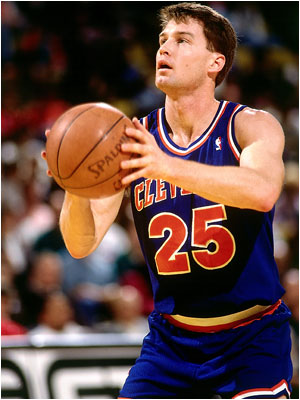
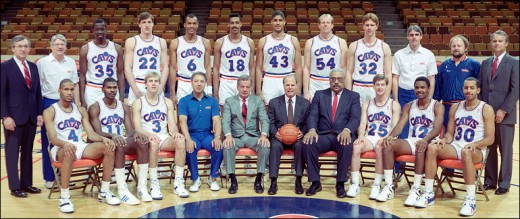
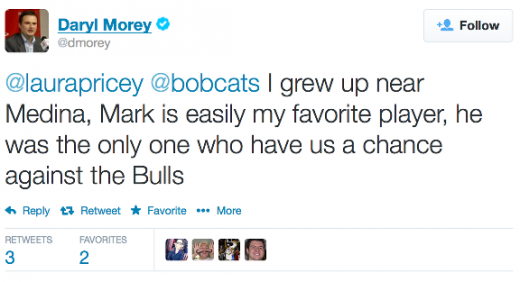
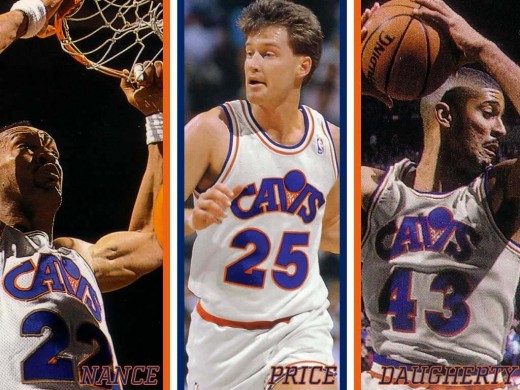

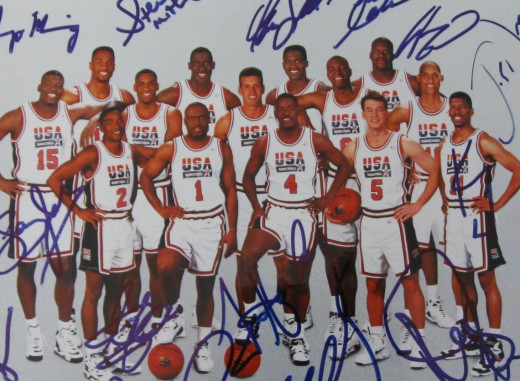

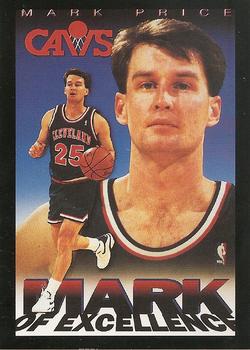

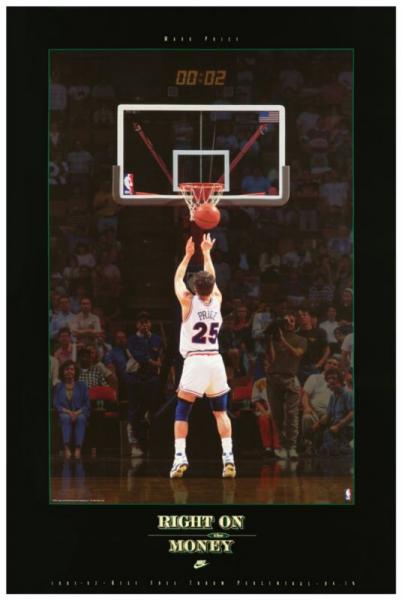
Love it. Totally agree with the rankings. Price was the man.
@MoNgO – that’s awesome! Looking through most of the players in #CavsRank, many seemed to have those humble, down to earth qualities.
Met Mark Price several times – first as dumb fan at old Coliseum – used to be able to wait around after the games ended and could talk to the players in the parking lot – get autographs, etc, was pretty cool, now the payers are much mire insulated and separated from the average fan…anyway, we’d wait around awhile and talk with all the players ultimately – they were all pretty nice, humble guys willing to hang out and sign autographs and talk hoops – Price and Daugherty in particular stick out as really cool guys – who would talk… Read more »
Thanks, MoNgo! That’s awesome you still have the poster hanging! My office is pretty decked out in Cavs gear.
My favorite Cavalier/NBA player of all time – by far – class act all around – have had the “Right on The Money” poster framed and hanging in my office since the early 1990’s – Price was phenomenal to watch play back in the day – and unlike #2 on this list, he actually played within a team concept and made the team better (and didn’t have to dominate the ball 40 minutes a game to make his impact on the game) – awesome choice for #1 Cavalier All Time boys!
Cleveland was such a sports powerhouse back in those days. It was amazing to have those teams in my childhood. I remember the eras of Cavs and Browns changing (dying even) in the mid-90s timed with me going to college. It was a kind of transition on all levels for sure. Luckily the Indians came on strong right around that time to bridge the gap.
I like the father-son aspect of the piece. My son will be ready for participating in sports pretty soon. I’m looking forward to those moments.
Thanks, DaveR. Cherish those moments with your son.
I used to love the way Price would hop through double teams when he split, and how often he converted wild off-balance layups in the lane. Price was the first player I can remember REALLy being proud of as a Cavalier…
Tom- I’ll have to see if I can find a copy online with enough clarity when blown up to find myself again. I’ll give it a shot.
Price is my favorite Cav as well. To say he was a phenomenal shooter is an understatement. His shots were almost always no-rim splashes. I have no memory of him rattling a shot in. Even his misses all looked like they were going in; I can’t remember anything that looked like a brick. After the injuries piled up, he developed that running jumper high off the glass from 6-8 feet out to avoid clashes at the rim- a thing of beauty. Still never seen anyone replicate that. I still would spit on Rick Mahorn if I ever came face to… Read more »
grover13 – take a picture and email it to me so I can post it in here. thomas.pestak[ampersand]gotbuckets.com
Love the Steph curry comparison, Mark Price is a pleasure to watch and as fierce a competitor as they come
Pete – yes, he had a lightning quick release, much like Step Curry. He needed almost no space to shoot and it allowed him to be such a devastating scorer, esp off the dribble, despite being 6 foot even. He always squared up so quickly no matter if his momentum was going left or right. Just really solid fundamentals. His release was/is the most flawless I’ve ever seen. It’s no wonder NBA players are benefiting from his shooting lab.
Daryl Morey agrees!
He was the best and a complete point guard that I have seen, sure there was Magic and Nash and so on , but Mark was just a joy to watch specially given his size . His trees were deadly and his demeanor on and off the court was fantastic . Here someone you can talk about with your kid as a family man and a fierce comparator . It’s a shame that Cleveland Cavaliers never approached him to be their coach. To me he can be as good or even better than Lenny Wilkins which I admire. Lets hope… Read more »
Tony – COSIGN!